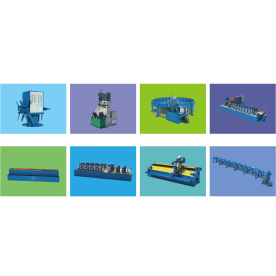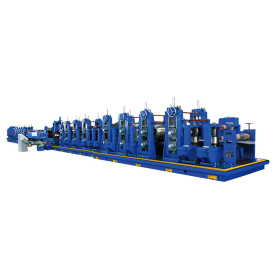[Uncoiler]Understanding the Importance of an Uncoiler in Modern Manufacturing Processes: A Comprehensive Overview
News 2024-12-11
****In the realm of modern manufacturing, efficiency and precision are paramount. One of the vital components that contribute to these factors is the uncoiler. This piece of machinery plays a critical role in the metal forming and processing industry, making it indispensable for various production lines. In this article, we will delve into what an uncoiler is, its functions, types, applications, and the advantages it brings to manufacturing processes.
What is an Uncoiler?
An uncoiler, also known as a decoiler, is a mechanical device primarily used to unwind coils of metal, such as steel or aluminum, before further processing. This equipment helps flatten the coiled material into sheets or strips, which can then be subjected to various processes like cutting, bending, or welding. The uncoiler’s design allows it to handle various coil sizes and weights, which significantly streamlines production and helps maintain material integrity.
Functions of an Uncoiler
At its core, the uncoiler serves several essential functions in the manufacturing process:

Understanding the Importance of an Uncoiler in Modern Manufacturing Processes: A Comprehensive Overview
2. **Preparation for Processing**: Before any metal fabrication processes can begin, the raw material must be properly uncoiled. The uncoiler prepares the material by providing a consistent and even feed to downstream processes, such as stamping, cutting, or forming.
3. **Integration with Other Machinery**: Modern uncoilers are designed to integrate seamlessly with other machinery in a production line. This integration improves workflow efficiency, as the raw material can be fed directly into processes like laser cutting or shearing.
Types of Uncoilers
Uncoilers come in various types, each designed to cater to different manufacturing needs:
1. **Manual Uncoilers**: These are simpler machines that require operator intervention for coil handling. While they are cost-effective, they may not be suitable for high-volume production environments.
2. **Automatic Uncoilers**: These machines are equipped with electronic controls and sensors that enable them to operate autonomously. They can adjust the unwinding speed based on the downstream processing requirements, improving overall efficiency.
3. **Hydraulic Uncoilers**: Utilizing hydraulic systems, these uncoilers can handle heavier coils with ease. They offer better control over the unwinding process, which can result in more precise metal shapes.
4. **Powered Uncoilers**: These are often used in high-speed production lines. Powered uncoilers have the ability to control the feed rate, which reduces mechanical strain and increases the lifespan of the equipment.
Applications of Uncoilers
Uncoilers find applications across various industries, including:
1. **Automotive Manufacturing**: In the automotive sector, uncoilers are used to supply raw materials for parts that must meet strict specifications. From chassis components to body panels, precise unwinding ensures that the subsequent processes are conducted with accuracy.
2. **Construction**: Metal roofing and siding materials often require uncoiling for shape modification. Uncoilers help provide the necessary material for these construction projects.
3. **General Fabrication**: Many general fabrication shops utilize uncoilers for metal sheets, allowing them to cut, bend, and weld accurately according to client specifications.
4. **Electronics**: In the electronics industry, uncoilers are crucial for supplying materials for circuit boards and other components that require precision engineering.
Advantages of Using an Uncoiler
Incorporating uncoilers into manufacturing processes presents several advantages:

Understanding the Importance of an Uncoiler in Modern Manufacturing Processes: A Comprehensive Overview
2. **Enhanced Safety**: Uncoilers minimize the risk of manual handling, reducing the chance of injury during material handling.
3. **Improved Material Quality**: The controlled unwinding process helps maintain the structural integrity of the metal, minimizing defects and material wastage.

Understanding the Importance of an Uncoiler in Modern Manufacturing Processes: A Comprehensive Overview
Conclusion
In conclusion, uncoilers play a vital role in modern manufacturing, ensuring that coils of metal are efficiently and safely unwound for further processing. Ideal for various industries, uncoilers offer a range of benefits, including increased production efficiency, improved safety, and enhanced material quality. As manufacturing continues to evolve with new technologies, the importance of uncoilers will only continue to grow, reinforcing their position as an essential piece of machinery in the production process.
